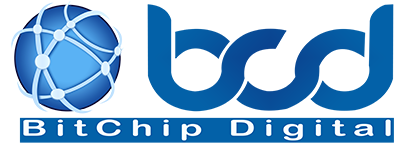
In a competitive marketplace, attracting and keeping attention is a constant challenge. Most business owners recognize that showing up on search engines can bring in new leads, but many struggle to bridge the gap between digital traffic and actual conversions. The difference lies in how search engine optimization is applied—not just to improve rankings, but to bring relevant customers closer to the moment of purchase. SEO is no longer a technical afterthought. It is a core marketing method that shapes how brands are found, understood, and trusted.
How Professional SEO Connects Professional Brands to the Right Clients
Professional services rely heavily on trust and reputation, often built over time through referrals and face-to-face networking. While these methods still matter, the first point of contact for many potential clients today is a search result. For accountants, consultants, legal firms, or architecture practices, that initial impression online can shape a potential client’s decision in seconds. By investing in SEO services, businesses in professional sectors can improve their visibility at the moment when prospects are actively seeking help. These services use keyword targeting, structured content, and on-page optimization to match a firm’s expertise with what clients are searching for. This match is what turns a curious searcher into a scheduled consultation.
Building Authority with Content That Solves Problems
The content a business produces isn’t just filler for blog pages—it communicates expertise. When content is guided by SEO strategy, it becomes more discoverable to people asking real questions. A law firm writing about lease disputes or an accounting firm offering guidance on quarterly taxes isn’t just generating traffic. They’re answering the concerns of their ideal clients. When people find detailed, relevant answers on a company’s website, they start to associate that brand with knowledge and reliability.
Authority builds with time and consistency. Search engines notice how users engage with a site, how long they stay, and whether they come back. Content that helps real people with real issues performs better across these metrics. With this performance comes higher rankings, and with those rankings come visitors who are already interested in what’s being offered. Each piece of content is not just a ranking tool but an opportunity to prove capability.
Technical Foundations That Keep Visitors Engaged
Behind the scenes, SEO work depends on a solid technical base. The structure of a website—the way pages link to one another, how fast they load, and how easy they are to navigate—affects both visibility and user experience. A slow-loading website or one that doesn’t display well on mobile won’t hold attention, even if the content is excellent.
Search engines prioritize sites that meet modern technical standards. That includes clean code, structured data, and responsive design. Professional businesses often overlook this aspect, focusing only on content or visual appeal. Yet, a technically sound website plays a key role in converting traffic. A smooth, seamless experience increases the chance that a visitor will stay, explore, and eventually make contact.
Technical SEO might sound invisible, but its impact is felt in every user interaction. From the speed of the first click to the clarity of a service page, it supports every other strategy. When these elements work together, the site doesn’t just attract visitors—it invites them to stay.
Local Visibility That Brings Real People Through the Door
For many businesses, growth happens within a specific region. Local SEO bridges the gap between a company and nearby customers looking for their services. Whether someone is searching for “family lawyer near me” or “business accountant in Chicago,” search engines return results that are geographically relevant.
Local optimization includes accurate listings on platforms like Google Business Profile, consistent name-address-phone information across directories, and reviews that build social proof. Even more, content that references local events, partnerships, or concerns signals relevance to both users and search engines.
This approach isn’t limited to walk-in businesses. A consultant working virtually can still dominate local searches if the profile is optimized correctly. Showing up in local search isn’t about flashy ads—it’s about showing reliability and accessibility to people ready to take action.
Analytics That Turn Insight Into Action
Knowing that people are visiting your site is helpful, but knowing *why* they’re visiting, where they’re coming from, and what they’re doing while there is far more powerful. SEO includes measuring performance with tools like Google Analytics and Search Console. These tools reveal which pages attract traffic, which queries lead people to the site, and where users drop off.
Armed with this data, businesses can make informed decisions. If a page with high traffic has low conversions, it might need clearer calls to action. If a certain service isn’t ranking well, it may be time to refine the keyword strategy. These adjustments aren’t guesses—they’re data-driven choices that lead to better results over time.
SEO is not a set of tricks to manipulate algorithms. It’s a method for aligning your business with the needs of real people. When done well, it brings the right traffic, sets the right tone, and makes it easy for potential customers to say yes.
